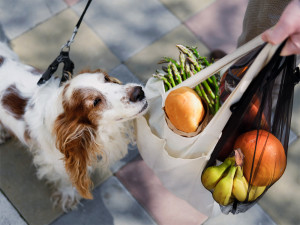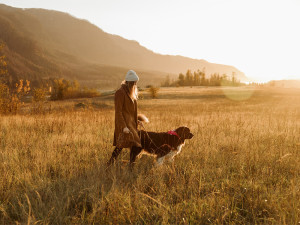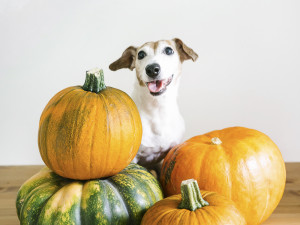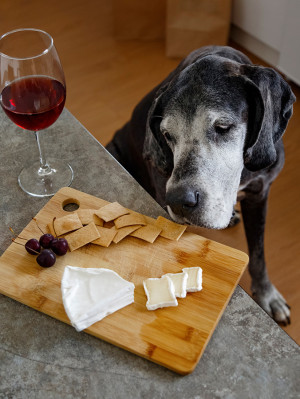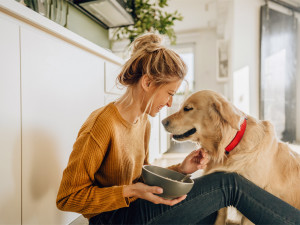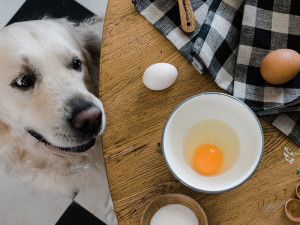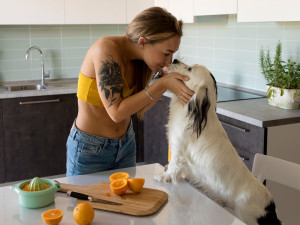Peas are chock full of nutrients, so you may be curious if your dog can eat ’em too. The good news is that dogs can eat peas in moderation and they can get some health benefits from doing so.
You’ll want to make sure they are not a main ingredient in your dog’s diet, because this has been associated with certain health problems. Read on to learn all about dogs and peas.
Nutrition facts about peas for dogs
Peas are the seed of the plant scientifically named Pisum sativum. There are many varieties of peas, some of which have edible pods, flowers, or shoots, while others just have edible seeds, or peas.
There are many common names for these edible peas including English peas, field peas, and green peas. Technically, peas are in the bean family, Fabaceae, making them legumes. They are rich in nutrients like fiber, protein, and many important vitamins and minerals.
How much do you spend on your pet per year?
Are peas good for dogs?
Peas contain many nutrients that are important for dogs. Since dogs are omnivores, they can eat a varied diet and utilize nutrients from both plant and animal sources. Some of the nutrients that peas provide include:
Fiber: Fiber is a non-digestible carbohydrate that is important for healthy gastrointestinal function. It serves to bulk up the stool, prevent constipation, and provide important nutrients to the gut microbiome.
Protein: Protein is a crucial source of energy for dogs. It also provides amino acids which serve as building blocks to make new proteins in the body including muscle, enzymes, and hormones.
Antioxidants: Natural compounds found in peas, including carotenoids, flavonols, and saponins are potent antioxidants. These compounds protect cells against damage from free radicals and may help to reduce inflammation, slow the aging process, and protect against certain forms of disease including some types of cancer.
Vitamins and minerals: Peas are rich in iron, phosphorus, magnesium and B vitamins. These nutrients are critical for normal biological functions throughout the body including supporting red blood cells in the transport of oxygen, as well as brain, nerve, and muscle function.
Can dogs eat any part of the pea plant?
Pea plants are considered non-toxic to dogs so technically they could take a bite of any part of the plant without too much to worry about. That said, plant matter is very fibrous and even non-toxic plants can cause digestive upset including diarrhea, vomiting, or bloating if dogs eat too much of it.
Are peas completely safe for dogs?
In general, small amounts of peas are quite safe for dogs to eat so long as they are an occasional snack and the bulk of their diet is a complete and balanced dog food. There are a few important points to keep in mind if you are considering sharing peas with your pup:
Fiber content: Peas are a high fiber food which carries important health benefits, but can also lead to digestive upset if your pup overindulges. Eating too much fiber can lead to gas, bloating and diarrhea, especially if your dog is not used to eating lots of high fiber snacks. It is always best to start slowly and offer just a small taste to see how your pup reacts.
High-starch content: Peas also contain a large amount of carbohydrates in the form of starch. While carbohydrates are a good source of energy, especially for highly active dogs, too many carbohydrates can lead to weight gain. It is important to keep your dog’s overall caloric intake consistent to prevent unintentionally overfeeding your dog and increasing the risk of weight gain and related health problems.
Other ingredients: If you are considering sharing a prepared dish with your pup containing peas, remember to also check all of the other ingredients to make sure they are also safe for your dog. Many times, prepared dishes contain a lot of unexpected ingredients and there are some common ones, like onions and garlic, that are not safe to share with your pup. The best option is to offer your dog plain cooked peas without any other ingredients.
Risks with dog foods containing peas: While peas can be safe as a small snack, there have recently been some health concerns raised about dog food diets that use peas and other legumes as a primary ingredient. You may have heard about dogs getting sick with heart disease after consuming certain grain-free diets. These diets substituted grains with legumes in many cases. While the exact mechanism that caused the heart disease is still being studied, there seems to be an association with diets high in legumes. As a general rule, it is best to avoid dog food diets that have peas or other legumes as one of the top ingredients.
The bottom line: Can dogs eat human food?
Dogs can and do eat lots of human foods and sharing the occasional snack with your pup can be a fun way to bond and spice up their regular routine. It is always important to check that foods you plan to share are safe and healthy for dogs to eat, however.
There are a handful of foods that are perfectly safe for us but can be toxic or unhealthy for dogs. If in doubt, be sure to contact your vet or a pet-poison hotline to get all the facts before introducing a new food to your dog. Be sure to keep all treats and snacks to a minimum in order to ensure that your dog gets the bulk of their calories from a complete and balanced dog food diet to avoid any nutritional deficiencies. This also helps keep their overall caloric intake in check to prevent overfeeding. As a general rule, treats and snacks should be no more than ten percent of your dog’s total diet.
FAQs (People also ask):
How many peas can a dog eat?
Peas are safe as a small snack. Start with just a few to make sure your dog tolerates them ok.
Is it OK to give dogs peas?
It is ok to give dogs peas in small amounts. They should be served sparingly as a treat or snack.
Why do dogs like peas?
Dogs may like the texture of the peas as well as the taste since they are high in protein.
Can dogs eat pea shoots?
Yes, dogs can eat pea shoots in moderation, but they are high in fiber, so too much can lead to digestive upset.
Other foods that are safe for dogs
Yogurt can be safe and healthy in moderation.
Fruits that are lower in sugar, like raspberries, are also a good choice.
Broccoli can make for a satisfying, high-fiber snack.
Other foods that are dangerous
Grapes and raisins are toxic to dogs and should never be shared.
Ice creamopens in new tab is also not a good food to share given the high-fat dairy content.
Rib bonesopens in new tab and other fatty cuts of meat, as well as cooked bones, should be avoided, too.


